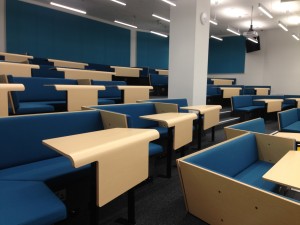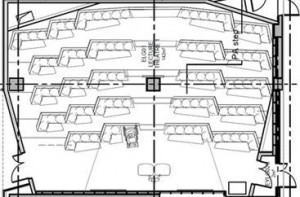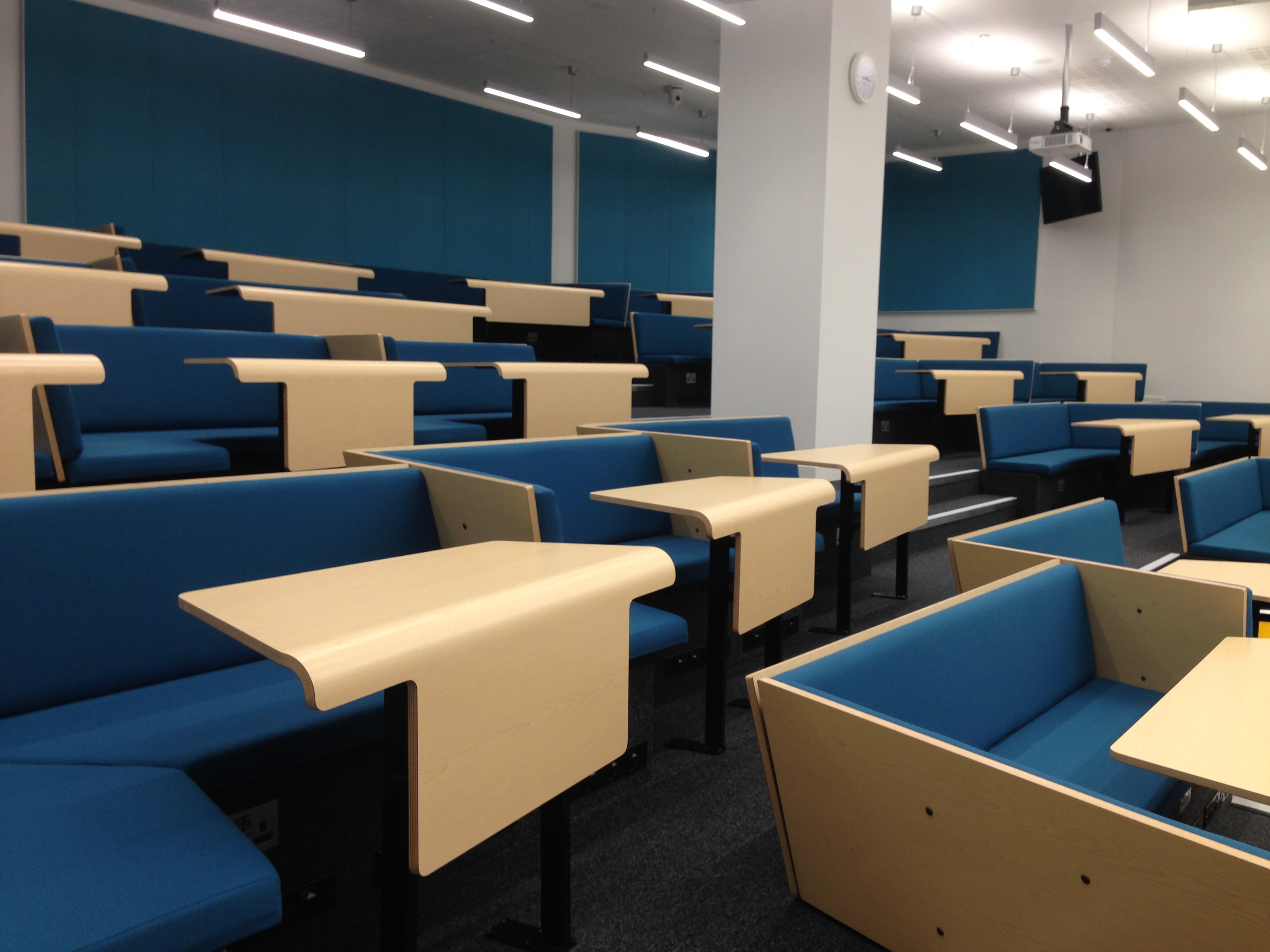
Flexibility and the ability to easily create moments of active learning, both individual and collaborative ones, inform the design of the new learning spaces at City University.
ELG01, a new cluster seating lecture theatre, has been designed to support students in using their own mobile devices to participate, and to encourage working together in groups to develop their communication, teamwork and understanding skills while engaging with the subject matter.
We recommend using the layout of ELG01 to do a quick team-building activity and some active and collaborative learning activities to engage students and get them to participate at key moments of your lecture.
Why?
In large group teaching, it is hard to get students to participate confidently, express their doubts and to give them meaningful feedback. The activities outlined here aim for students to share their answers with a small group of their peers, discover new perspectives and receive feedback, while engaging with the subject matter. This allows them to develop their subject matter knowledge in more depth and their critical thinking, communication and teamwork skills.
Technique
ELG01 sits one hundred students in cluster seats for three to six students each. Two of those students can plug in a charger for a laptop, tablet or phone.

If you haven’t created groups outside of the lecture room, you might have small, informal, heterogeneous and randomly generated groups of students. Groups might be different in every lecture and their members may or may not know each other and be comfortable sharing a booth, potentially affecting their level of participation.

To get students to feel comfortable and as an ice-breaker:
- Run a Think-Group-Share activity with clickers or Poll Everywhere (click on the link for more details).
- Get them to first answer a question individually and then explain their choice to the group. The group will then vote on what they think is the best answer and, when you repeat the question, present the answer they’ve elected.
- Once they’ve shared their opinion with their group, they should feel more confident to share it with the whole class. Get students to select or alternate being a spokesperson and feed back the results to the whole class, if they can’t be displayed on the screen.
- If some basic ground rules for group work are set up, the activity should allow students to feel comfortable collaborating later during the lecture.
- Once the group dynamic is set up, use other group activities at key times of the lecture to explore the potential of collaborative learning in this room: buzz groups, Think-Group-Share, structured problem solving, or case studies.
Technology
Where can this activity be done?
ELG01
BG07 or any other swivel-seat lecture theatre.
If you’re in a fixed-seat lecture theatre, get students seating together to form pairs, or trios. Bear in mind it’s difficult to work for long periods of time in these conditions, so time-consuming or complex tasks should be done outside of class time, or in another room (Barkley, Cross and Major, 2005, p.51).
For more ideas on group work activities in flexible learning spaces visit http://tinyurl.com/LSgroupwork.
References
Barkley, E.F., Cross, K.P., and Major, C.H. 2005. Collaborative Learning Techniques: A Handbook for College Faculty. San Francisco: Jossey-Bass.
Jaques, D. 2000. Learning in Groups: A Handbook for Improving Group Work. 3rd Edition. London: RoutledgeFalmer.

